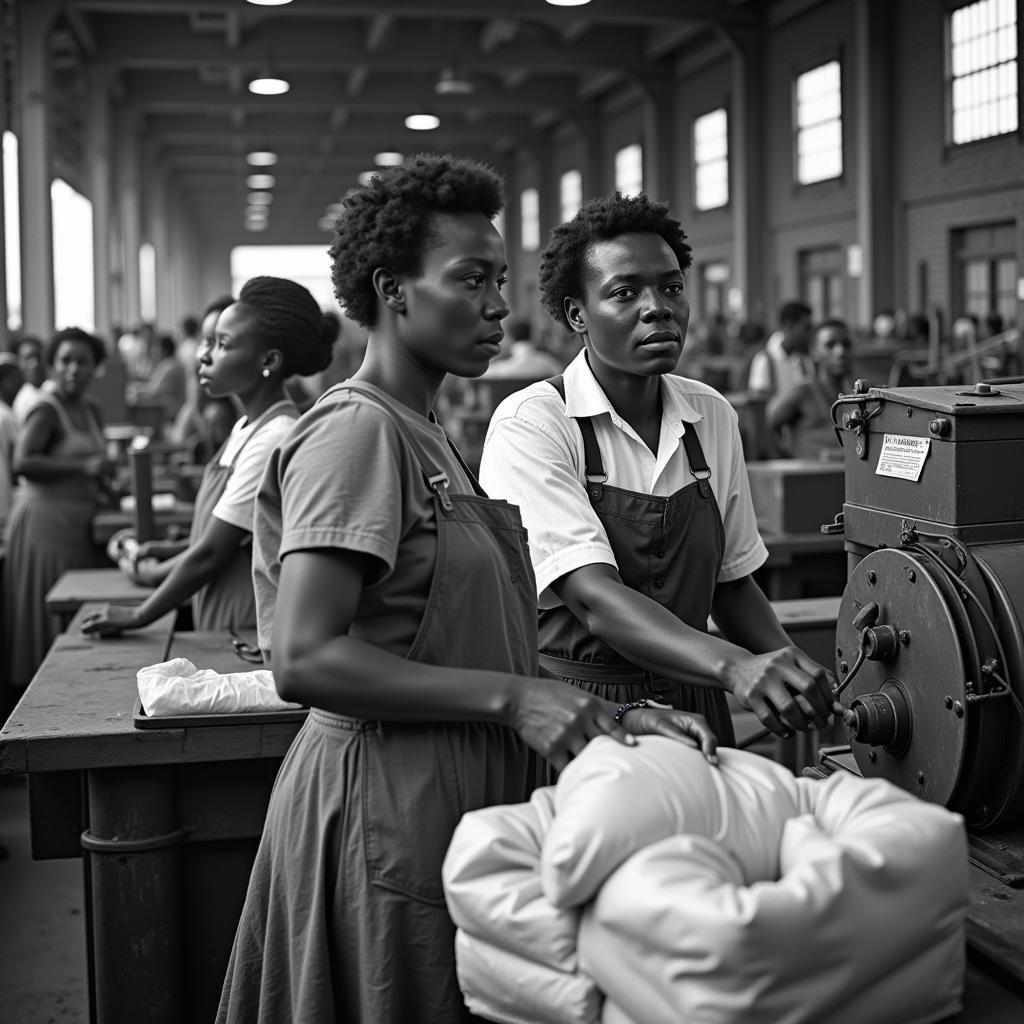African American Jobs in the 1950s: A Story of Segregation and Struggle
The 1950s in America were a time of significant change and upheaval, particularly for African Americans. While the post-World War II economic boom brought prosperity to many, African Americans continued to face widespread discrimination and segregation, significantly impacting their employment opportunities. African American Jobs In The 1950s were largely confined to low-paying, labor-intensive sectors, reflecting the persistent racial inequalities of the era.
The Legacy of Jim Crow: Limited Job Opportunities for African Americans
Despite the advancements made during the Harlem Renaissance and the New Deal era, Jim Crow laws continued to cast a long shadow over the lives of African Americans in the 1950s. These laws, enforced primarily in the Southern states, mandated racial segregation in all public spaces, including workplaces. This segregation relegated African Americans to separate and unequal facilities, effectively limiting their access to better-paying jobs and advancement opportunities.
 African American Workers in Factory
African American Workers in Factory
The agricultural sector, a traditional source of employment for African Americans in the South, experienced a decline in the 1950s due to mechanization. This shift further reduced job prospects for many African Americans, forcing them to seek opportunities in urban centers.
Urban Migration and the Search for Better Jobs
The Great Migration, which began in the early 20th century, saw millions of African Americans leave the rural South for industrial cities in the North and Midwest. This exodus was driven by the promise of better jobs, housing, and education. However, even in these urban centers, African Americans faced significant challenges in securing well-paying jobs.
Domestic Work and Manual Labor: The Prevalent Occupations
For many African American women, domestic work remained the most common form of employment. They often worked as maids, cooks, and laundresses for white families, facing long hours, low wages, and poor working conditions. Men, on the other hand, often found themselves relegated to low-paying manual labor jobs in factories, construction sites, and sanitation departments. These jobs rarely offered benefits, job security, or opportunities for advancement.
The Rise of the Civil Rights Movement and the Fight for Economic Justice
The 1950s marked a turning point in the fight for racial equality in America. The landmark Brown v. Board of Education Supreme Court ruling in 1954 declared state-sponsored segregation in public schools unconstitutional, signaling a major victory for the burgeoning Civil Rights Movement. This victory, along with the tireless efforts of civil rights activists like Martin Luther King Jr. and Rosa Parks, fueled a nationwide movement demanding equal rights and opportunities for African Americans, including equal access to jobs and fair treatment in the workplace.
The Struggle Continues: Laying the Groundwork for Future Progress
The 1950s, though marked by continued hardship and discrimination, laid the groundwork for significant progress in the fight for economic justice for African Americans. The Civil Rights Movement gained momentum, challenging discriminatory hiring practices and advocating for equal pay and opportunities. While true economic equality remained elusive, the seeds of change were sown, paving the way for further advancements in the decades to come. To delve deeper into the social and cultural landscape of this era, explore more about African American society in the 1950s.
Conclusion
The story of African American jobs in the 1950s is a testament to the resilience and determination of a community facing immense challenges. Despite the limitations imposed by segregation and discrimination, they persevered, laying the foundation for a future where equal opportunities would be available to all. Understanding their struggle provides valuable context for appreciating the progress made and the work that still lies ahead in achieving true economic equality. To gain a broader historical perspective, you can explore the African American history timeline.




